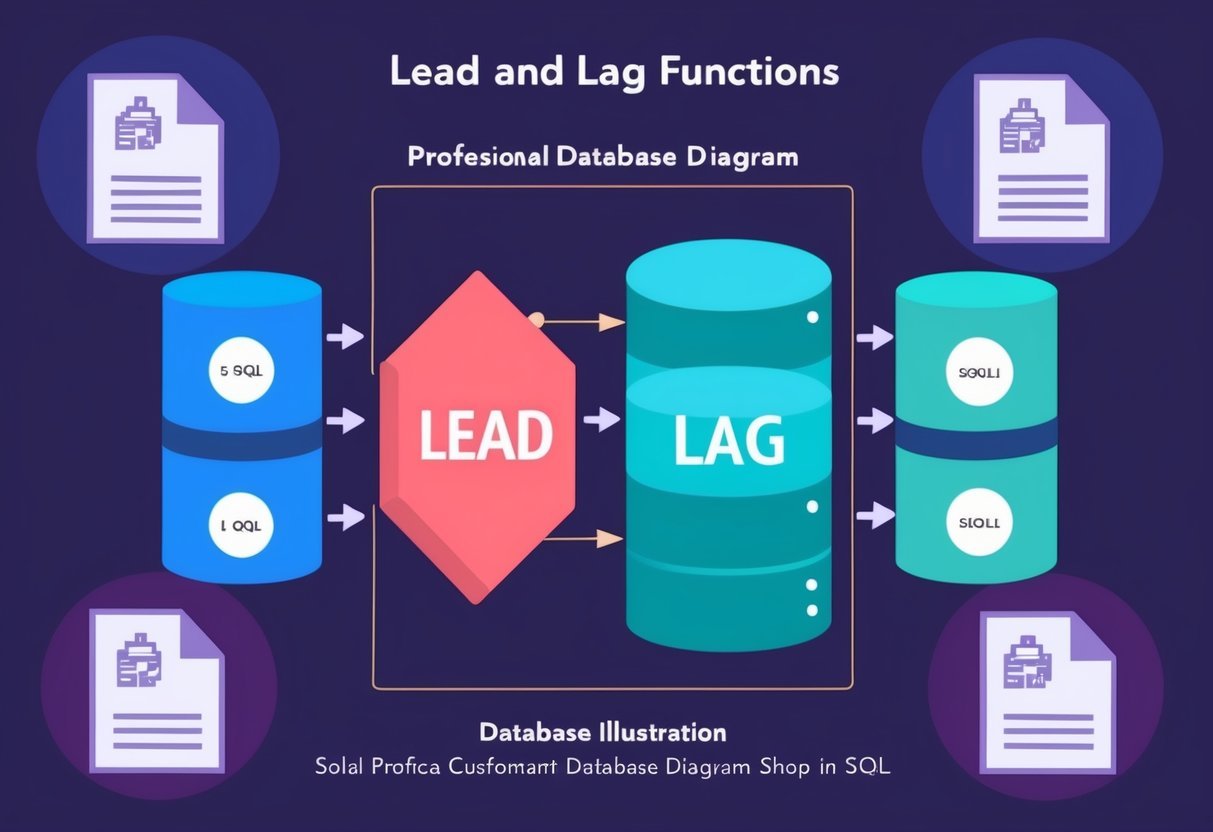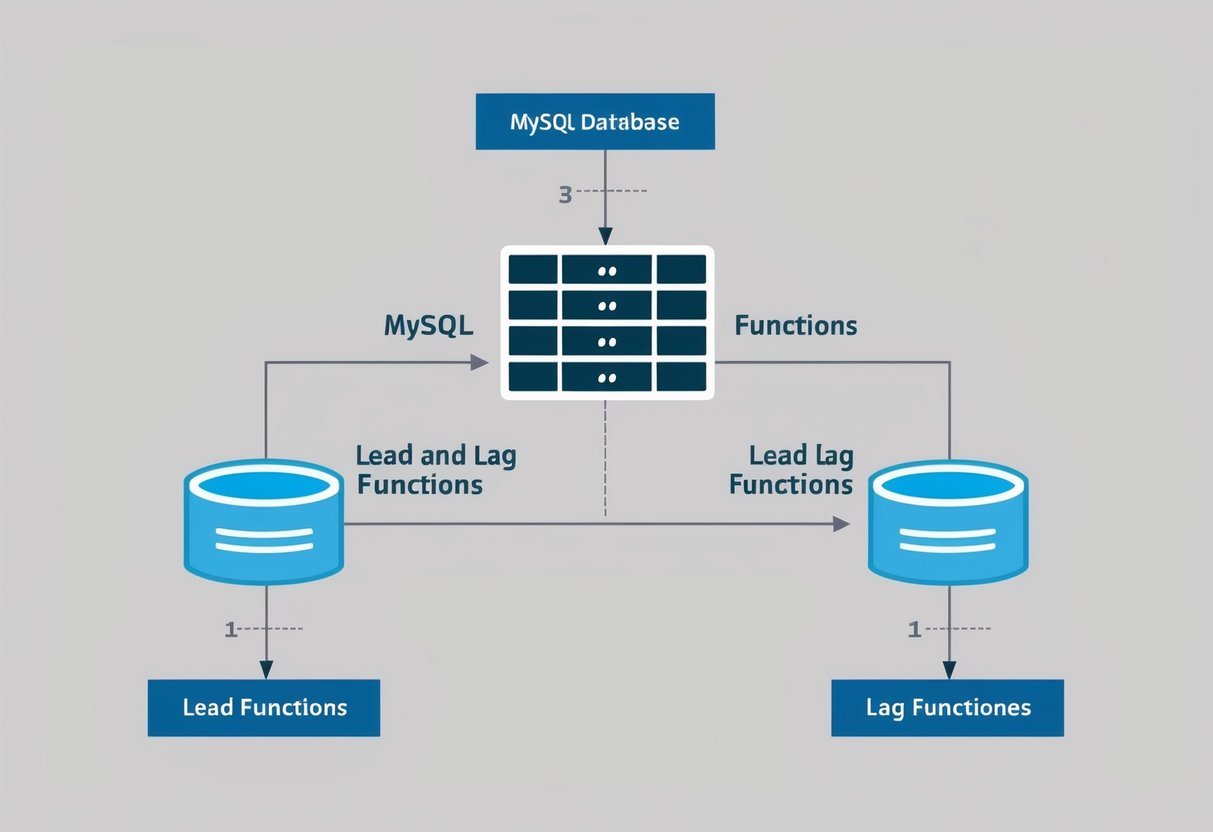Understanding Power BI Workspaces
Power BI Workspaces are essential for organizing, sharing, and managing content within Power BI. They help users collaborate effectively while maintaining control over reports and datasets.
Workspaces can be customized to suit different levels of access and project needs.
Types of Workspaces
In Power BI, there are two primary types of workspaces: My Workspace and App Workspaces.
My Workspace is a personal area for individuals to create and store their content. It is best suited for initial development and testing. Here, users have full control over their reports and datasets but cannot share them with others directly.
In contrast, App Workspaces support collaboration and sharing within a team. These workspaces allow multiple users to collaborate, publish, and distribute reports. They are ideal for projects requiring teamwork and wider distribution of Power BI content.
App Workspaces integrate with the Power BI Service for seamless sharing and collaboration, making them a versatile option for team settings.
Workspace Roles and Permissions
Understanding roles and permissions in Power BI Workspaces is crucial for effective management and collaboration. Each workspace can have different roles, each with specific permissions.
Admin: This role has full control over the workspace. Admins can add or remove members, change permissions, and manage all content within the workspace.
Member: Members can create, edit, and publish content but can’t manage user access settings.
Contributor: Contributors can view and interact with content but are restricted from making significant changes.
Viewer: Viewers have the most limited access. They can only view reports and dashboards without making any edits.
Each role supports specific actions, helping maintain data security and proper workflow. Managing these roles effectively ensures the integrity and security of the data within the workspace.
Creating Reports With Power BI
Creating reports in Power BI involves using various tools and techniques to transform raw data into insightful visualizations. Key elements include developing reports and utilizing semantic models, which help streamline the process and enhance data analysis.
Developing Reports
In Power BI, developing reports begins with importing data from various sources like Excel, databases, or cloud services. Users can drag and drop data fields onto the workspace to create visualizations such as charts, tables, or maps.
Each visualization can be customized for appearance and function. Filters and slicers help users focus on specific data segments.
Power BI Desktop offers a user-friendly interface, making it easy for users to build visually appealing and interactive Power BI Reports. These reports are then published to the Power BI Service for collaboration and sharing.
Utilizing Semantic Models
Semantic models in Power BI help structure data, providing a logical framework that simplifies data interactions. These models are built by defining relationships between tables, creating hierarchies, and setting up calculated measures.
This setup ensures that users can easily slice and dice data across different dimensions without needing complex queries.
Semantic models enhance performance and accuracy when generating Power BI Reports. By abstracting data complexity, they allow for more intuitive report creation and data exploration.
Users can ensure consistency and clarity across reports, making them a powerful tool for conveying insights efficiently in Power BI.
Enhancing Collaboration Within Power BI
Power BI offers robust features for collaboration, allowing team members to work together more effectively. By integrating Power BI with Microsoft Teams, users can enhance project communication and data sharing.
Integration With Microsoft Teams
Power BI seamlessly integrates with Microsoft Teams, making it easier for team members to access reports and dashboards directly within their communication platform. This integration facilitates real-time discussions and decision-making based on live data.
Users can share specific dashboards or reports in a Teams channel, allowing team members to view and collaborate without needing to leave the conversation. This feature streamlines workflows and ensures everyone has the most up-to-date information.
Additionally, integrating with Teams supports features like mentioning colleagues or scheduling meetings to discuss specific data points.
Facilitating Collaboration
Power BI’s functionality extends to various collaboration tools, such as shared workspaces and comment features.
Shared workspaces enable multiple users to develop and refine data models and reports concurrently. This collaborative environment enhances the quality and speed of data projects.
Comments can be added directly to reports or visualizations, enabling team members to discuss insights within the context of specific data points. This feature provides a clear communication trail that helps teams track issues and suggestions.
By leveraging these tools, organizations can improve collaboration, making data-driven decisions more effectively and efficiently.
Data Security and Governance
In Power BI, managing data security and governance is crucial to protect sensitive information and ensure compliance. This involves implementing security measures like row-level security and applying data sensitivity labels to manage how data is accessed and shared.
Row-Level Security
Row-Level Security (RLS) allows organizations to set data access permissions at a more granular level. By using RLS, data can be restricted to specific users within Power BI, ensuring that individuals only see the data relevant to their roles.
This is especially important for businesses with confidential information, such as financial data or client records.
Implementing RLS requires defining roles in Power BI and using DAX filters to specify which data users can view. For example, a sales manager may only access sales data for their region, preventing them from viewing information from other regions.
This structured approach helps maintain control over sensitive data and reduces the risk of exposure.
Data Sensitivity Labels
Data Sensitivity Labels in Power BI are used to classify and protect data based on its importance and sensitivity. By tagging data with labels, businesses can enforce rules on how data is shared and processed, aligning with compliance requirements.
These labels help in identifying sensitive data quickly and controlling its distribution.
For instance, data labeled as “Confidential” might have strict sharing restrictions, while “Public” data might be freely accessible to all employees.
Labels are integrated into Power BI, allowing for seamless management of security policies.
By doing so, organizations can ensure that sensitive data is handled appropriately, reducing the risk of data breaches and enhancing overall security measures in their BI environments.
Sharing Power BI Content
Sharing Power BI content involves distributing reports and dashboards efficiently within an organization. This includes both internal collaboration and controlling how content is shared externally.
Sharing Reports and Dashboards
Power BI allows users to share reports and dashboards easily with others. Via the Power BI Service, individuals can upload their work to a cloud platform.
This cloud service facilitates seamless sharing across teams, enhancing collaboration. They can choose specific colleagues to view or edit the reports, ensuring that sensitive data remains protected.
Sharing can also be done through Microsoft’s Teams, where links to Power BI workspaces can be shared in specific channels. This integration allows for real-time communication and discussion about the data insights provided by the reports and dashboards.
Control External Sharing
Control over external sharing is crucial for maintaining data security within Power BI. Users must determine who outside the organization can gain access to specific content.
Power BI Pro subscriptions offer more advanced options for managing these permissions.
Administrators can set policies to restrict sharing outside the organization or require additional authentication for external users.
By configuring these settings carefully, organizations can ensure that their data remains secure while still allowing partners and stakeholders outside the company access when necessary.
Power BI Mobile Accessibility
Power BI Mobile enhances a user’s ability to access data on the go. It allows individuals to interact with their reports and dashboards through mobile devices with ease.
Using Power BI Mobile Apps
The Power BI Mobile Apps are designed to provide users with access to their data anytime and anywhere. These apps are available both on iOS and Android platforms.
Users can easily view reports, dashboards, and KPIs directly from their mobile devices.
One important feature is the ability to create data alerts. This helps keep track of any changes or specific thresholds in real-time.
The mobile apps also support natural language queries, enabling users to ask questions about their data in simple terms.
Navigation and interactions are designed to be intuitive. Users can zoom into data visualizations and even share insights with team members through the app. This makes collaborating and staying informed more straightforward.
Direct Access on Mobile Devices
Power BI offers direct access to data through mobile devices without needing a desktop environment. This means users can log in to the Power BI Service directly from their mobile browsers.
This access ensures that users are not limited by location or device form factor.
With direct access, real-time collaboration is possible, permitting users to edit and update dashboards and reports while on the move.
Data security remains a priority. Power BI uses encryption and other security measures to ensure that data accessed on mobile devices is protected. This allows organizations to confidently share critical business information without compromising security standards.
Power BI Apps and App Workspaces
Power BI Apps and App Workspaces are essential components for organizing and distributing content efficiently. They enable streamlined sharing among users and make collaboration simpler by grouping related reports and dashboards.
Developing Power BI Apps
Developing Power BI Apps involves creating packages of related dashboards and reports. These apps simplify sharing and ensure that team members have access to consistent datasets.
Users can bring all content together under one interface, making it easier to manage and understand the data.
Developers can customize apps with specific branding, adjust navigation, and control user permissions for better data security. They can also integrate data from various sources, enhancing the app’s versatility.
Using Power BI Premium, apps can handle larger datasets, making them ideal for organizations that require advanced analytics capabilities.
Managing App Workspaces
Managing App Workspaces is crucial for effective collaboration. Workspaces provide a shared environment where team members can contribute to and refine data sources and reports.
Users can create, edit, and manage reports in these dedicated spaces before publishing them as part of Power BI Apps.
Admins control access and assign roles within workspaces, ensuring sensitive information is protected. This is especially important when handling high-volume data and analysis through Power BI Pro or Premium subscriptions.
Organizing content in workspaces helps teams stay focused and coordinated, making it easier to track project progress and make data-driven decisions.
Administration and Sharing Settings
In Power BI, managing how data is shared and who has access requires careful configuration. Administrative functions ensure the right users get access, while maintaining data security and integrity.
Important administrative tasks include setting up correct access levels and understanding how to share content effectively within the organization.
Sharing as a Power BI Admin
As a Power BI admin, sharing involves granting permissions to users within an organization. Admins can manage these settings through the Power BI Admin Portal.
It is essential to understand the limits of different license types. While Power BI Pro users can share reports and dashboards, those using free versions might face restrictions.
Admins must ensure appropriate licenses are in place to facilitate smooth collaboration.
Access can be configured through security groups or individual user permissions. Setting up sharing permissions ensures that only authorized users can view or edit shared content.
Admins should regularly review these settings to prevent unauthorized access and keep sensitive information secure.
Access Settings and Build Permissions
Access settings determine who can view, edit, or build reports in Power BI. Admins utilize these settings to maintain control over data distribution.
Build permissions allow users to interact with datasets, create new reports, and develop dashboards based on shared data, enabling collaboration in data-driven projects.
Admins need to clearly define who receives these permissions. Incorrect settings may lead to unwanted changes or data exposure.
Leveraging groups for permissions can simplify management and enhance security.
Careful planning ensures that users have the right level of access, promoting seamless collaboration while safeguarding data integrity.
Regular audits help ensure these configurations stay aligned with organizational needs.
Power BI Premium and Premium Per User
Power BI offers flexible solutions for organizations that need advanced data capacities. Premium Capacity provides enterprise-level capabilities, while Premium Per User offers individual users advanced tools at a lower cost.
Understanding Premium Capacity
Premium Capacity is designed for larger organizations needing extensive data processing. It allows enhanced performance, larger data models, and greater storage.
With Premium Capacity, data refreshes can be more frequent, supporting real-time analytics.
This option facilitates collaboration, enabling large groups to access reports and dashboards without individual licenses. It also supports advanced AI features, automates tasks, and allows paginated reports to be published across the organization.
Key features include:
- Increased processing power: Better performance for large-scale reports.
- Dedicated capacity: Resources are not shared with others outside the organization.
Features of Premium Per User
Premium Per User offers advanced features at a user level. It’s suitable for individuals needing powerful analytics tools without the cost of a full Premium subscription.
Users benefit from features like larger data capacity, AI-driven insights, and dataflows. Premium Per User also offers paginated reports and enhanced sharing capabilities with others on the same plan.
Among its features, users find:
- Dataflows and AI insights: Automated processes for deeper insights.
- Higher data limits: More extensive datasets compared to Power BI Pro.
- Collaborative tools: Allows better sharing with security across teams.
Using either Premium Capacity or Premium Per User depends on the organization’s size and needs. Both options ensure efficient and effective handling of complex data operations.
Report Sharing and Distribution
Report sharing and distribution in Power BI are essential for efficient collaboration within an organization. Users can share reports directly, allowing others to access and view insights without needing to recreate the analysis from scratch.
Direct Sharing Options
Power BI provides several options for direct sharing of reports, making collaboration seamless.
Users can share reports with specific individuals or groups using email invitations. This allows recipients to access the report directly from their Power BI account.
Another method is through shareable links that provide access to anyone with the link, although this might require adjusting permissions for security.
Embedding reports into apps or websites is another feature that facilitates sharing with a broader audience while maintaining strict access controls.
Each option allows different levels of access, ensuring that sensitive data remains protected. Organizations should evaluate the best direct sharing method based on their security needs and the audience’s requirements.
Report Sharing Best Practices
For effective report sharing practices, choosing the right sharing options is crucial.
Users should always consider data privacy and sensitivity before sharing.
Setting up proper access controls ensures that only authorized individuals view the reports. This might involve using role-based access controls or restricting sharing to specific groups within the organization.
Regularly reviewing access permissions helps prevent outdated roles or unauthorized users from accessing reports.
Another best practice is training stakeholders on how to use shared reports effectively. By familiarizing them with navigation and usage, you can enhance the usability and impact of shared insights.
Implementing these best practices can significantly improve collaboration and decision-making processes in a business intelligence environment.
Developer Resources in Power BI
Power BI offers a robust set of tools for developers looking to enhance business intelligence solutions. Whether creating custom visuals or embedding Power BI features, developers can utilize a variety of resources to tailor data analytics experiences.
Power BI for Developers
Power BI provides developers with several integration capabilities.
The Power BI REST API allows developers to automate tasks and manage Power BI features programmatically. This is crucial for embedding reports and dashboards into web or mobile applications, enhancing user interaction with data.
Developers can also use Power BI Embedded to integrate analytics without requiring users to sign up for Power BI. This is beneficial for businesses that want to provide seamless data insights to customers.
Moreover, SDKs and development tools, such as Power BI Developer Tools, help streamline the integration process. They enable developers to customize reports and dashboards effectively.
With easy access to these tools, developers can focus on creating innovative solutions that boost business intelligence capabilities.
Custom Development Options
Custom development in Power BI includes building unique visuals and tailoring reports to meet specific business needs.
Developers have the flexibility to create visuals using the Power BI Visuals SDK. This tool allows for personalization and innovation in presenting data.
Using R and Python scripts, developers can also embed advanced analytics and machine learning models into Power BI reports. This enriches the analytical capacity of the reports dramatically.
Additionally, developers can deploy Power BI solutions in various environments, supporting both cloud-based and on-premises data sources.
Such custom options not only enable targeted business intelligence strategies but also ensure that unique organizational goals are met effectively.
These capabilities make Power BI a versatile and essential tool for developers working on business intelligence projects.
Engaging Stakeholders with Power BI
Engaging stakeholders effectively with Power BI involves strategic sharing and collaboration. By tailoring the way reports and dashboards are shared, businesses can boost engagement with both internal and external users, facilitating better decision-making and communication.
Sharing With Internal Users
Internal users need seamless access to Power BI reports and dashboards for efficient operation.
Companies can integrate Power BI within their existing systems, allowing departments like finance and marketing to access real-time data. This can enhance processes and aid quicker decision-making.
Power BI’s collaboration features can promote teamwork by enabling users to comment on reports and share insights within teams.
Security settings allow controlling who sees sensitive information, maintaining confidentiality while sharing useful data widely across an organization.
Understanding these tools empowers users to take full advantage of Power BI features.
Access can be customized with different levels of permissions. Users might have viewing rights, or more advanced roles such as editing or creating content. This flexibility makes Power BI valuable for fostering collaboration and engagement internally.
Sharing With External Users
Sharing Power BI content with external users can help improve relationships with partners and stakeholders.
By enabling external access to reports, businesses can ensure everyone is aligned with key metrics and insights. This is important during external meetings or events involving collaborations.
Power BI allows sharing with users outside an organization, while still securing sensitive information.
Features like data visualization make it easier for external users to grasp important information quickly. This kind of transparency helps build trust and ensures partners are well-informed.
When sharing with external users, businesses can use options such as exporting Power BI reports or setting up dashboards that can be accessed via links. This approach ensures that relevant parties have up-to-date data they can easily use, facilitating smoother collaborations.
Frequently Asked Questions
Sharing and collaboration in Power BI help optimize data reporting and analysis within organizations. Some common questions focus on sharing permissions, access for external users, and managing dashboards.
How can I share a Power BI report with users who do not have a Power BI Pro license?
Users need a Power BI Pro license to fully access shared reports. To share with those who do not have a license, they must be added to a workspace on a Power BI Premium capacity. The Premium capacity allows users to view and interact with reports without needing a Pro license.
What are the steps to share a Power BI dashboard with others within my organization?
To share a dashboard, navigate to the dashboard you want to share in the Power BI service. Click on the “Share” option to enter email addresses of the users within your organization.
Set the permissions to allow view or edit access as needed. This helps facilitate internal collaboration.
How can external users access shared Power BI content without their own license?
For external users to access shared content, use Azure B2B collaboration.
Invite them as guest users in a Power BI workspace hosted on a Premium capacity. This enables access without the need for each external user to have a Power BI license.
In what ways can Power BI support collaboration on data analysis projects?
Power BI supports collaboration through features like shared workspaces, where multiple users can access, view, and edit reports.
Additionally, dashboards can be linked to Microsoft Teams channels for integrated communication, allowing team discussions directly within the data context.
What permissions are required to allow for sharing and collaborative work in Power BI?
To enable sharing, users must have build permissions within Power BI workspaces. These permissions allow users to access and share reports and dashboards.
Administrators can also set role-based access controls to define specific permissions for different users, promoting secure collaboration.
Can you explain the process for managing access to Power BI reports?
Managing access involves setting user roles and permissions in the Power BI service. Admins can assign roles such as viewer, contributor, member, or admin to control what each user can do. Regular reviews and updates to these roles ensure that only authorized users have the necessary access to reports and data.


































